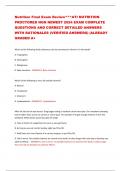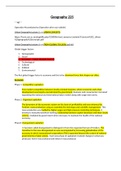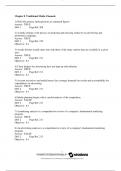Summary
Entrepreneurship and Innovation Management 318 A1 Summary
- Course
- Institution
This document is a combination of the lecture slides and student summaries. At the back of the document, there is important theory that is highlighted for A1 purposes.
[Show more]








